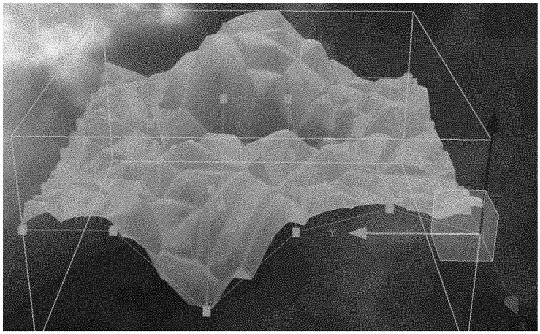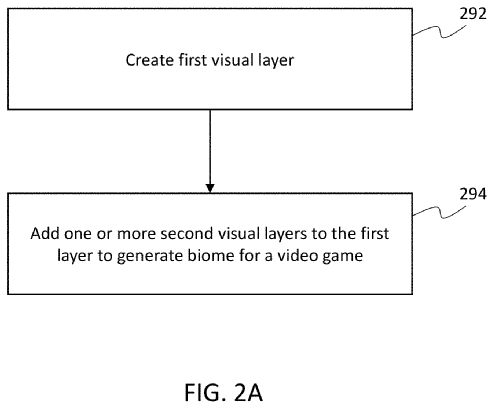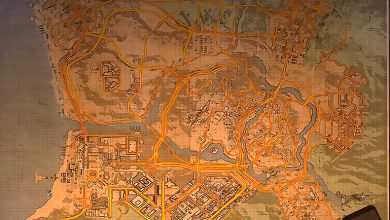
Story Highlights
- Activision has patented a new in-game terrain and biome generation system for devs to let them edit the terrain on a larger scales while automating some aspects.
- The patent will allow developers to craft biomes in a game terrain in different layers, with each layer featuring its own set of rules that can be changed depending on the necessity.
- The rules can include a variety of things, such as one part of the biome forest not having trees in one layer and the underwater not having a certain fish type.
- The improved terrain generation will also ensure to reduce the development lifecycles of AAA games if implemented in practice.
Activision has recently published a new patent that seeks to revolutionize in-game terrain and biome generation for developers. The newly proposed system will allow content creators to automate the editing and populating process of an in-game terrain by a wide margin. The company argues that current methods of creating in-game terrain to populate it with biomes can be a very tiresome process on a large scale, requiring a lot of manual work.
The patent dubbed “METHODS AND SYSTEMS FOR DEVELOPING VIDEO GAMES TERRAIN SYSTEMS” discusses generation biomes within a game landscape. Currently, the editing tools used in the development of games only target specific patches of in-game terrain since the tools are detailed-oriented. These patches are then weaved together; hence, the new system seeks to automate the tedious steps and work on a larger scale.
There is a need to create and use biomes to quickly and efficiently populate a terrain with props and materials and maintain consistency between different terrains of a game space.”

The patent by Activision states that various types of in-game maps are needed for different platforms in a high resolution. Moreover, managing and populating the biomes with other props and foliage on a larger scale and efficiently on an in-game terrain also needs to be accelerated. Hence, Activision provides a method with various embodiments that discuss and solve the issue in elaborative and technical jargon.
Given the complexity of biomes, there is a need to enable game designers and content creators to iterate through biomes rapidly in a map editor, design biomes for extreme detail as well as large scale procedural generation and create biomes that efficiently run with a resolution of at least 60 fps.”
Hence, Activision delivers a way “to provide a degree of procedural generation of clutter for large terrains that cover widespread areas or a geography.” The proposed system in the patent uses at least two layers with their own set of rules layered atop each other to work together in harmony. It is worth noting that these rules can be decided by the game devs freely, allowing for a dynamic and efficient development environment.

Specifically, the tools enable the developers to define a rule system that make propagation of attributes across layers that define a biome, describe how clutter are placed in a terrain, and efficiently create blending height maps.”
The biome in the in-game terrain will consist of these layers to automatically handle large swathes of land instead of manually detailing the small patches. One layer could refer to the land of the biome, while the other could be underwater, with both layers having their own rules. Activision states that one of these layers could be control or base layers, which can be utilized to control the behavior of a biome at different levels.
In one instance, we could add the rule of having no trees for a single layer or only having a specific type of tree. On the other hand, having rules for no large clutter could also be added to another layer to thin or remove all large objects currently placed on the map.

Additionally, the proposed system in the patent also discusses a way to perfectly blend a variety of various biomes together on the game terrain. Thus, height maps can blend the various biomes featuring different heights together in a visually appealing way for the players.
Activision’s patent may significantly reduce the development lifecycles that currently plague the AAA industry. Thus, we may see titles like Call of Duty come out faster than before.
The studio is widely known for patenting eccentric yet intriguing ideas, and this appears to be one of them. For instance, it has patented to generate in-game music unique to every user. However, it is also securing new game modes, such as patenting a mode for MVP players to participate in bonus matches decided by the non-MVP players. Furthermore, it recently patented a method to render 3D visuals instead of 2D games.
Similar Reads: An Entire Year Was Spent Just Polishing Tears Of The Kingdom, Producer Reveals.
Thanks! Do share your feedback with us. ⚡
How can we make this post better? Your help would be appreciated. ✍



